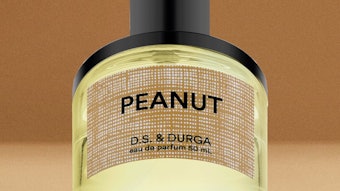For those of us who have been in the fine fragrance industry for 20 years and more, we must surely recognize and agree that the growth of our business has been a very exciting and prosperous journey. However, with growth there is also the question of what and when is the “tipping point” in a saturated market? There is a cost to all this growth, and it’s a challenge for all of us—brand owners, fragrance suppliers, raw material providers and even retailers—to consider.
More competition requires higher concentration and focus on the identity of brands in order to stand out among the rest. How and what do we need to do or change in order to continue to sustain our businesses and differentiate our brands from all others? Fragrances can no longer be marketed the same way they used to be. Years ago, one could say that a great advertising campaign with a sexy or romantic theme would easily lure the consumer to the counter to make a purchase. The cliché that “sex sells” is not necessarily the case anymore. One can see that advertising campaigns often look similar to one another, and brands that once had strong, loyal followers now find that there are more and more attractive brands to consider. Going forward, the industry needs to begin to rethink, work smarter and be more innovative in its approach to fragrance concepts, fragrance development and communication to the consumer.
Retail: Then and Now
As fragrance launches increased over time, so too did the retailer landscape. By stepping back in time and moving forward, I hope to capture (broadly) that landscape, from when I started in the business to where it is today.
I am sure that readers have heard “lines of distribution are overlapping” and “consumers are confused.” This is understandable because there was a period of time in which fine “perfume” would never have been found in mass drugstores. Fine fragrance was only sold in the department stores, while mass-marketed fragrances were only found in food, drug and some mid-tier department stores. When I lived in France in the late 1980s, there also was a clear division between distribution points.
At some point in time, mass retailers sought to create access for consumers to be able to purchase the classic fine fragrances such as Shalimar and
Perhaps not coincidentally, what seemed to occur around this same time was the entry of new “masstige” fragrances, priced to fill in the gap between mass and prestige fragrance price points. This was perfect timing for companies to license celebrity fragrances, because finished goods houses could then offer consumers an aspirational fragrance “signed” and endorsed by a celebrity at price points often in between fine and mass pricing. Pop celebrities were very à la mode, and their fans went wild purchasing their scents. According to Michael Edwards’ “Fragrances of the World” data, celebrity brands more than quadrupled between 2003 and 2013, with many of them coming from companies such as Elizabeth Arden and Coty. Elizabeth Arden, of course, owned the license for Elizabeth Taylor’s White Diamonds, which was the absolute queen of all celebrity fragrances, remaining No. 1 in the mass category for a very long time.
“Flankers” and “limited editions” arrived within approximately the same period of time as celebrity fragrances. Flankers, as many readers may know, is the term for a scent that does just that—it flanks a “pillar” fragrance. Flankers often have an olfactive link to the pillar scent, though some have a revolutionary olfactive twist with almost no connection to the pillar whatsoever. Limited editions, on the other hand, fill in gaps and are perfect brand enhancements for promotional events, seasonal offerings or special holidays. Flankers and limited editions come in a variety of themes, such as spring, summer, sport, night, intense, black, light, eaus, aqua and fresh.
I believe that many consumers began to react negatively to the proliferation of launches into the marketplace because so many fragrances began to smell similar to one another and concepts were all too similar as well. The saturated market led to boredom and confusion for many consumers. Fragrance was no longer considered as aspirational and prestigious as in previous decades.
The need for uniqueness, signature and higher-quality “juice” provided a perfect entrée to the landscape for the ultra-prestige fragrance genres of “niche” and “artisanal” scents. Artisanal and niche fragrances are typically elegantly bottled, with price points often way above $100, and always offered in limited distribution. They speak of rare and noble ingredients, are “signed” by master perfumers (as in the case of Frédéric Malle), are meticulously crafted and often tell stories that seduce the emotional chords of the consumer. They are the anti-mass and anti-mainstream.
Stores such as Barney’s and Bergdorf Goodman grew to be known for carrying these disruptive niche fragrances. Artists, designers and visionaries such as Serge Lutens and Frédéric Malle were the pioneers of this genre of scent. They were followed by other disruptive and unique brands such as Le Labo, which offered customized fragrances, and Francis Kurkdjian, who launched his own Maison Francis Kurkdjian brand.
Edwards’ data indicates that the niche category grew from 128 launches in 2003 to 395 in 2013. After a recent trip through the floors of Barneys and Bergdorf’s, I believe that we will see many more niche launches in 2014. However, one must ask at some point in the near future, will niche remain niche, or will this category also become saturated?
Ruth Sutcliffe built her awareness of scent from a very young age. In a career spanning over 25 years, Sutcliffe has gained expertise in a wide range of end-uses—including fine fragrance, laundry and air care, and all genres of personal care products. She has held positions including fragrance evaluator at Fritzsche Dodge & Olcott and Creations Aromatiques, and worked in fragrance development at IFF, where she co-authored a patent called NeutrIFF. She later served as a sensory analyst and fragrance developer for Clairol, and now serves as senior marketing director and fragrance designer at Coty, where she lends her fragrance expertise in the development of both lifestyle and celebrity brands such as Beyonce, Katy Perry, Celine Dion, Guess and Nautica.










